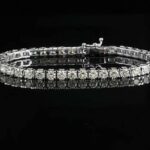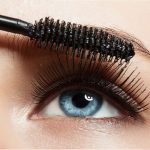When you buy a pair of sunglasses, your first thoughts might be about style, color, or lens tint. But hidden in the technology of many high-quality sunglasses is a small feature that makes a big difference in how well your eyes are protected and how clearly you can see — the anti-reflective coating.
Also known as AR coating or anti-glare coating, this nearly invisible layer on your lenses plays a critical role in improving your vision comfort and reducing eye strain. You may not notice it at first glance, but once you understand what it does, you’ll wonder how you ever wore sunglasses without it.
Let’s explore what anti-reflective coatings are, how they work, and why they matter more than most people realize.
What Is an Anti-Reflective Coating?
Anti-reflective coatings are ultra-thin, multi-layered films applied to the front, back, or both sides of sunglasses lenses. Their purpose is to reduce the amount of light that reflects off the surface of the lens, especially when you’re exposed to bright conditions or strong light sources from behind or beside you.
These reflections aren’t just annoying — they can interfere with your vision. When light bounces off the inner side of your sunglasses lens, it can reflect into your eyes, causing distraction, fatigue, or even momentary blindness in extreme cases. You’ve probably experienced this while driving toward the sun or walking by a window that catches the light just right.
An anti-reflective coating helps to eliminate that effect. It absorbs and neutralizes those internal reflections, allowing more natural light to pass through the lens without distortion or glare. The result is clearer, crisper vision, especially in high-glare environments.
The Physics Behind the Coating
Here’s where things get a bit scientific — but in a good way. Light travels in waves, and when it hits a boundary between two materials (like air and glass), some of it passes through while some is reflected. The difference in the speed of light through each material determines how much light is reflected.
Anti-reflective coatings are made of special materials designed to interfere with the way light reflects off a surface. By applying several thin layers of materials with differing refractive indexes, scientists can engineer destructive interference — which means light waves bounce into each other and cancel out.
This process reduces the intensity of reflected light across a wide range of wavelengths (colors), allowing more light to pass cleanly through the lens and into your eye. It’s a delicate balance of optics and chemistry, and when done properly, it creates a nearly invisible film that significantly improves how well your sunglasses perform.
Benefits You Can See and Feel
The first and most noticeable benefit of an anti-reflective coating is reduced glare. Whether you’re walking near water, driving at sunrise, or sitting on a patio with glass walls around you, glare can be distracting and even dangerous. AR coatings help prevent those harsh reflections from interfering with your line of sight.
Another benefit is visual clarity. With fewer reflections bouncing around inside the lens, your eyes can focus more easily. This is particularly helpful in bright sunlight or when wearing sunglasses for long periods. Your eyes don’t have to work as hard to process what they see, which means less squinting and less fatigue at the end of the day.
You also get improved aesthetics. Lenses without AR coatings can show reflections on the outside, making it harder for people to see your eyes. With AR-coated lenses, your sunglasses look cleaner and sharper because they allow more light to pass through and don’t produce visible ghost reflections or smudges as easily.
Inside vs. Outside: Where Should AR Coating Go?
Not all anti-reflective coatings are the same. Some sunglasses only apply the coating to the back (inner) side of the lenses, while others apply it to both sides.
Back-side coatings are the most common in sunglasses. They prevent light from reflecting off the inner surface of the lens and bouncing into your eye — a major cause of discomfort, especially when the sun is behind you.
Front-side coatings are less common in sunglasses because many lenses have tinted or mirrored surfaces that naturally reduce reflections. However, some high-performance sunglasses include AR on both sides for maximum visual clarity.
If you’re looking for the best visual comfort, try to choose sunglasses that include at least a back-side AR coating — especially if you spend a lot of time driving, outdoors, or in reflective environments.
Anti-Reflective Coating vs. Polarized Lenses
It’s important to understand the difference between anti-reflective coating and polarization. People often confuse the two, but they serve different purposes.
Polarized lenses reduce horizontal glare that reflects off flat surfaces like roads or water. Anti-reflective coatings, on the other hand, reduce light reflections from the lens itself. Polarization helps with external glare; AR coatings help with internal reflections.
Many premium sunglasses include both — giving you glare reduction from both outside and inside the lens. For people who spend time around water, snow, or glass, this combination makes a noticeable difference.
You can find affordable models that offer both technologies without compromising on style or comfort. For example, Faded Days Sunglasses are known to include anti-reflective coating and UV protection in many of their polarized styles, making them a practical option for people who want all-around eye protection.
UV Protection Still Comes First
While anti-reflective coatings improve comfort and clarity, they don’t block ultraviolet (UV) rays. You still need lenses that offer UV400 protection, which blocks 99–100% of UVA and UVB rays. This is the most important factor in protecting your long-term eye health.
An ideal pair of sunglasses would include UV400 protection, polarized lenses, and an anti-reflective coating. These features work together to reduce risk, improve vision, and prevent discomfort in bright environments.
Cleaning and Care Tips
Anti-reflective coatings are effective, but they can be delicate. To keep them performing at their best, avoid using harsh chemicals or paper towels on the lenses. Always use a microfiber cloth and a lens-safe cleaner.
If your sunglasses seem smudged or scratched easily, they may have a low-quality AR coating — or none at all. Investing in sunglasses with high-quality coatings will reduce the need for constant cleaning and make your lenses more durable in the long run.
Concluding: A Small Feature That Makes a Big Impact
Anti-reflective coatings are one of those features you don’t think much about until you experience them. Once you’ve worn sunglasses with a good AR coating, it’s hard to go back. Your vision feels cleaner, your eyes feel more relaxed, and you get through long days outside without the usual fatigue.
It’s not just a detail for tech enthusiasts — it’s a real upgrade for anyone who spends time in the sun. Whether you’re a driver, hiker, beachgoer, or simply someone who wants better sunglasses, look for lenses that include anti-reflective coatings along with UV protection and, ideally, polarization.

















